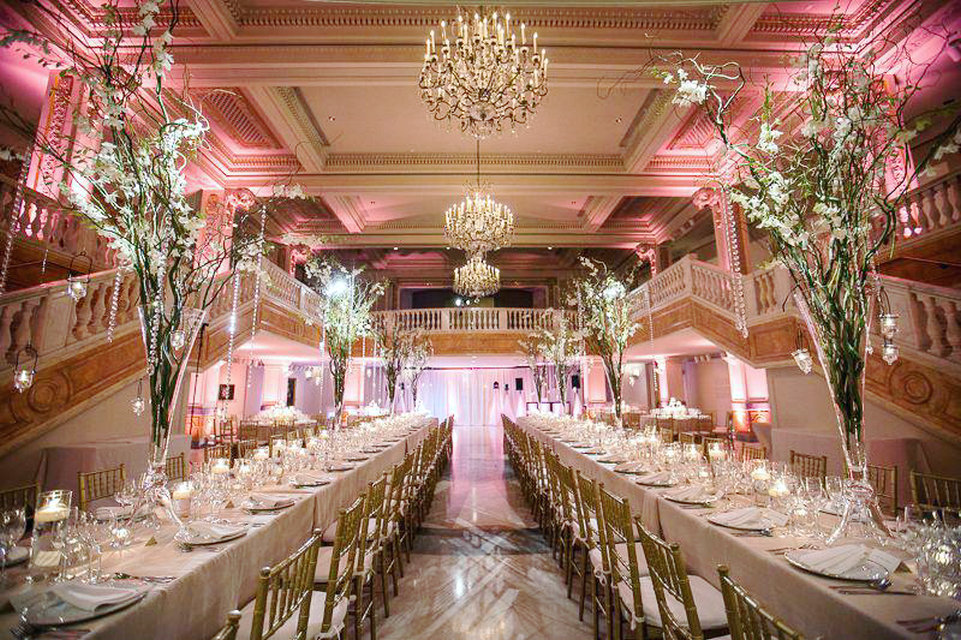The National Museum of Women in the Arts (NMWA), located in Washington, D.C., is “the only major museum in the world solely dedicated” to celebrating women’s achievements in the visual, performing, and literary arts. NMWA was incorporated in 1981 by Wallace and Wilhelmina Holladay. Since opening its doors in 1987, the museum has acquired a collection of more than 4,500 paintings, sculptures, works on paper, and decorative art. Highlights of the collection include works by Mary Cassatt, Frida Kahlo, and Élisabeth Louise Vigée-Le Brun. The museum occupies the old Masonic Temple, a building listed on the U.S. National Register of Historic Places.
Founded in 1981 and opened in 1987, the National Museum of Women in the Arts (NMWA) is the only museum solely dedicated to celebrating the achievements of women in the visual, performing and literary arts. The museum’s collection features 4,500 works from the 16th century to the present created by more than 1,000 artists, including Mary Cassatt, Frida Kahlo, Alma Thomas, Lee Krasner, Louise Bourgeois, Chakaia Booker, and Nan Goldin, along with special collections of 18th-century silver tableware, botanical prints, and artists’ books.
NWMA brings recognition to the achievements of women artists of all periods and nationalities by exhibiting, preserving, acquiring, and researching art by women and by teaching the public about their accomplishments. To fulfill its mission, the museum cares for and displays its collection, presents special exhibitions, conducts education programs, maintains the Betty Boyd Dettre Library and Research Center, publishes a member magazine and books on women artists, and supports a network of state and international committees. NMWA also serves as a center for the performing and literary arts and other creative disciplines. NMWA is located at 1250 New York Avenue, NW, Washington, D.C., in a landmark building near the White House.
The museum was founded to reform traditional histories of art. It is dedicated to discovering and making known women artists who have been overlooked or unacknowledged, and assuring the place of women in contemporary art. The museum’s founder, Wilhelmina Cole Holladay, and her husband Wallace F. Holladay began collecting art in the 1960s, just as scholars were beginning to discuss the under-representation of women in museum collections and major art exhibitions. Impressed by a 17th-century Flemish still life painting by Clara Peeters that they saw in Europe, they sought out information on Peeters and found that the definitive art history texts referenced neither her nor any other woman artist. They became committed to collecting artwork by women and eventually to creating a museum and research center.
The National Museum of Women in the Arts was incorporated in December 1981 as a private, non-profit museum, and the Holladay donation became the core of the institution’s permanent collection. After purchasing and extensively renovating a former Masonic Temple, NMWA opened in April 1987 with the inaugural exhibition American Women Artists, 1830–1930. To underscore its commitment to increasing the attention given to women in all disciplines, NMWA commissioned Pulitzer Prize-winning composer Ellen Taaffe Zwilich to write Concerto for Two Pianos and Orchestra inspired by five paintings from the permanent collection, for an opening concert. In November 1997, the Elisabeth A. Kasser Wing was opened, adding two new galleries, a larger museum shop, and a reception room. Currently, Director Susan Fisher Sterling heads a staff of more than 30 people.
The collection currently contains more than 4,500 works in a variety of styles and media, spanning from the 16th century to present day. Among the earliest works is Lavinia Fontana’s Portrait of a Noblewoman, ca. 1580. There are also a number of special collections, including 18th century botanical prints, works by British and Irish women silversmiths from the 17th–19th centuries, and more than 1,000 unique and limited edition artists’ books.
Beginning in 1987 with American Women Artists, 1830–1930, NMWA has presented more than 200 exhibitions. A selection of the most prominent exhibitions includes:
Loïs Mailou Jones: A Life in Vibrant Color (Oct. 9, 2010–Jan. 9, 2011)
Royalists to Romantics: Women Artists from the Louvre, Versailles, and Other French National Collections (Feb. 24–Jul. 29 2012)
An Imperial Collection: Women Artists from the State Hermitage Museum (Feb. 14, 2003–June 18, 2003)
Women Who Rock: Vision, Passion, Power (Sep. 7, 2012–Jan. 6, 2013)
Places of Their Own: Emily Carr, Georgia O’Keeffe, and Frida Kahlo (Feb. 8, 2002–May 12, 2002)
The Magic of Remedios Varo (Feb. 10, 2000-May 29, 2000)
Julie Taymor: Playing With Fire (Nov. 16, 2000–Feb. 4, 2001)
WACK! Art and the Feminist Revolution (Sep. 21, 2007–Dec. 16, 2007)
Dreaming Their Way: Australian Aboriginal Women (Jun. 30, 2006–Sep. 24,2006)
